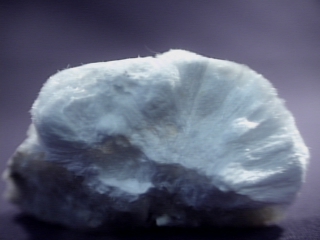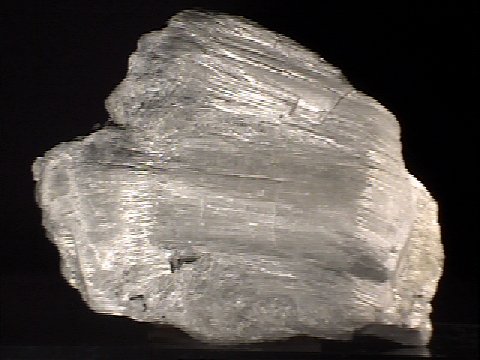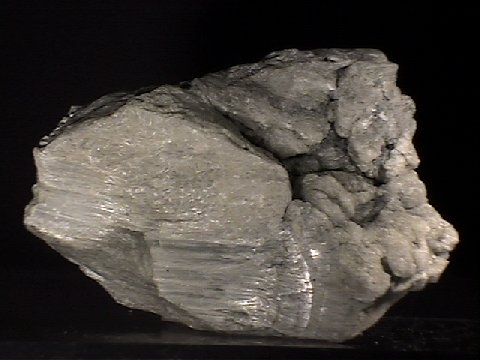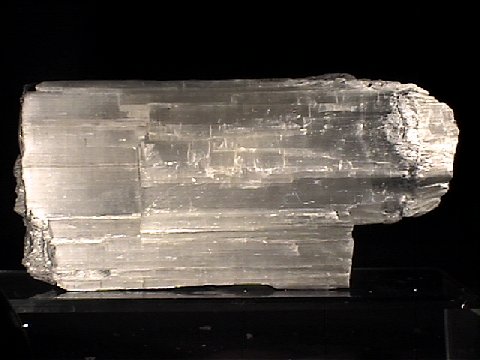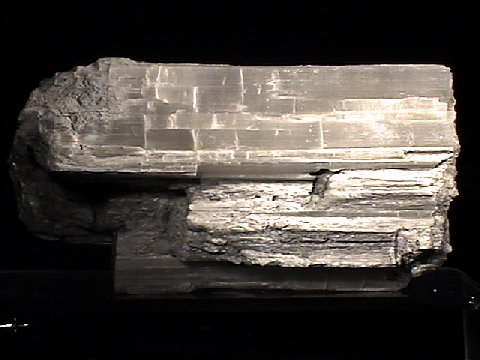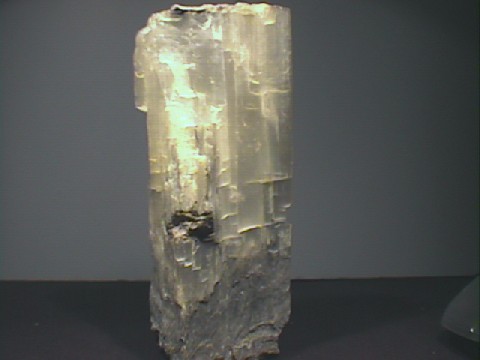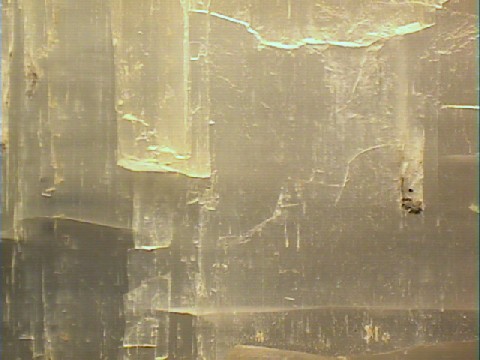 The Mineral ULEXITE
The Mineral ULEXITE
- Chemistry: NaCaB5O6(OH)6-5H2O, Hydrated Sodium Calcium Borate Hydroxide
- Class: Carbonates
- Subclass: Borates
- Uses: an ore of boron and as mineral specimens.
Specimens
Ulexite is found with the mineral borax and is directly deposited in arid regions from the evaporation of water in intermittent lakes called playas. The playas form only during rainy seasons due to runoff from nearby mountains. The runoff is rich in the element boron and is highly concentrated by evaporation in the arid climate. Eventually the concentration is so great that crystals of ulexite, borax and other boron minerals form and accumulate to great thickness.
Specimens of ulexite may form a "cotton ball" tuft of acicular crystals. These can be confused with the similar appearing tufts of the silicate mineral okenite, but are of a completely different origin with completely different mineral associations.
Ulexite is also found in a vein-like bedding habit composed of closely-packed fibrous crystals. This variety is called "TV Rock" and is popular in many rock shops, especially with children. If the specimen is approximately an inch thick and is polished flat on both sides perpendicular to the fibers, then an unusual optical phenomenon can be seen. The fibers will behave like optical fibers and transmit an image from one side of the specimen to the other. In other words, a good specimen, resting on a newspaper will have the writing appear to be on top of the specimen without any distortion of the lettering. The newspaper can easily be read upon the surface of the ulexite! This is a phenomenal optical property that will stun anyone who has not seen it before. This effect is partially the result of the large spaces in the sodium octahedral chains mentioned above.
PHYSICAL CHARACTERISTICS:
- Color is white or gray to colorless.
- Luster is silky.
- Transparency crystals are transparent to translucent.
- Crystal System is triclinic; bar 1
- Crystal Habits include tufts of acicular crystals called "cotton balls". Also as vein-like masses of parallel fibrous crystals.
- Cleavage is perfect in one direction.
- Fracture is fibrous.
- Hardness is 2 (softer than a fingernail)
- Specific Gravity is approximately 1.97 (very low density)
- Streak is white.
- Associated Minerals are borax, colemanite, hydroboracite and other borate minerals.
- Other Characteristics: similar borate minerals have an alkaline taste, while ulexite is tasteless.
- Notable Occurrences include several localities in California and Nevada, USA; Tarapaca, Chile and Kazakhstan.
- Best Field Indicators are crystal habit, associations, locality, density, unique optical property, and hardness.

